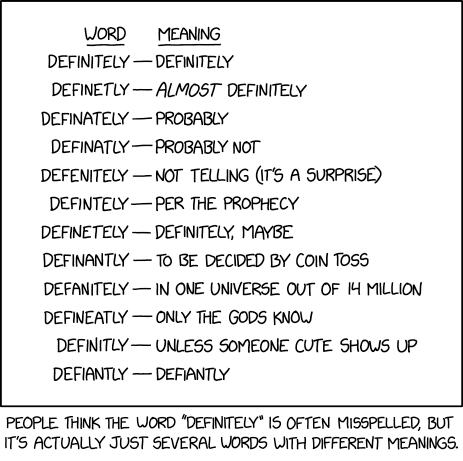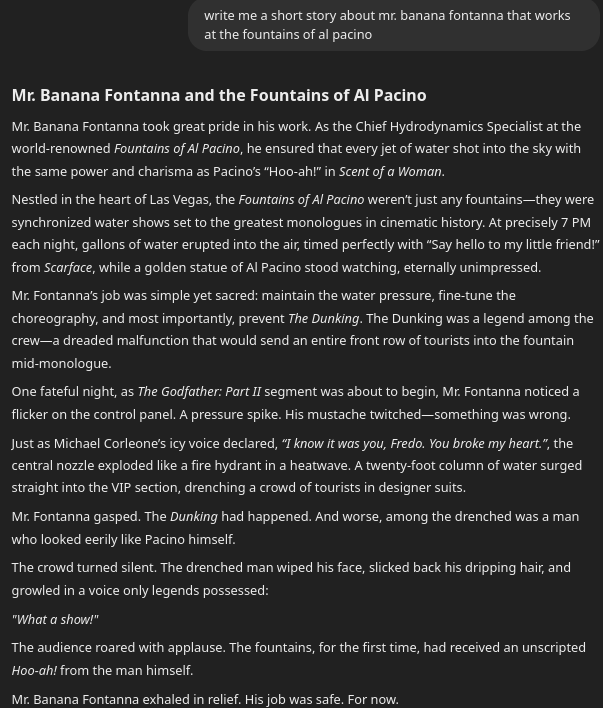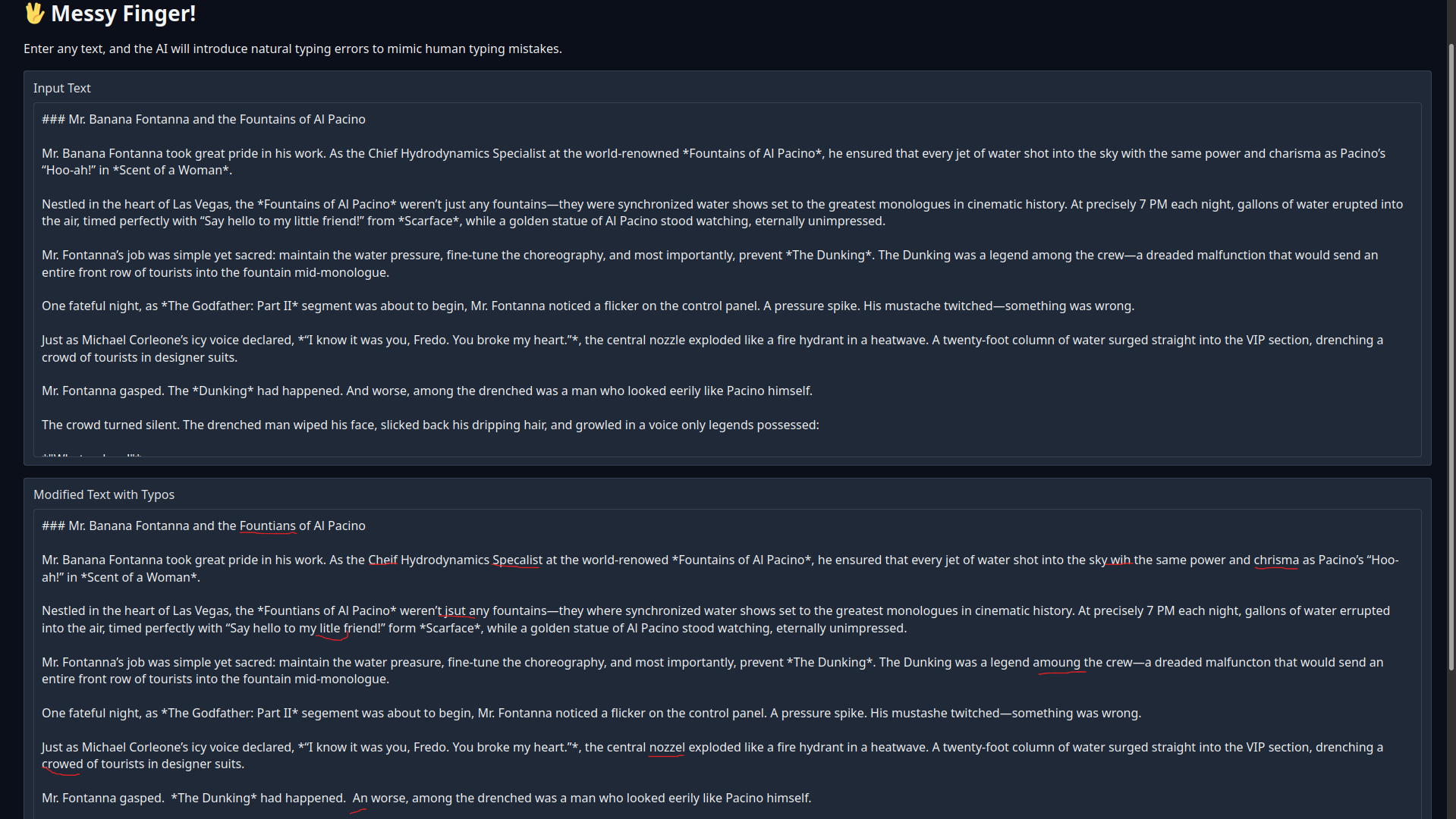The Messy Finger Conspiracy
Teh Introduction
In a world where AI-generated text is scarily perfect, there’s one thing AI still struggles with—our beautiful, chaotic, and utterly human typing mistakes. Missspellings and swpaped letters might just be our last defense against the rise of the machines (unless you’re a writer—in which case, my condolences, because your perfectly polished work is most at risk of being flagged as AI-generated).
This blog-esque thingy is divided into three parts (probably wrong about this, but whatevs), and congrats—you’ve landed on the first one! The third part will cover common mistakes and where to find them, and second, lastly, we’ll explore methods to ensure you get ‘penis’ (a part of human male anatomy) instead of ‘pennies’ (a useless little sonovabitchy coin that somehow costs more to produce than its assigned value).
So, let’s begin… this blog, that is. BTW, every mistake is fine. Your life is fine. Or is it? And if it isn’t, was it ever? And if it was, was it actually yours? What if you’re just a typo in the universe’s autocorrect? A misplaced ‘teh’ in the grand manuscript of existence? And if that’s true… who’s holding the backspace?

Teh Literature
- Damerau (1964) – Typing Errors and Edit Distance
- Introduces Damerau–Levenshtein distance, a fundamental concept in spell-checking.
- Identifies four primary errors: substitutions, insertions, deletions, and transpositions.
- Grudin (1983) – Novice vs. Skilled Typing Errors
- Novice typists make more random errors, whereas skilled typists make predictable errors (e.g., phonetic substitutions).
- Goodman & Kruskal (1983) – Typing Errors & Probability
- Errors are not random—certain letter combinations are more prone to mistakes.
- Example: High-frequency words tend to have fewer errors.
- Gingold & Tversky (2011) – Auto-Correct & Cognition
- Auto-correct systems fail to recognize context-based errors (e.g., “from” instead of “form”).
- Human errors often follow cognitive biases—misremembering common words.
- Baroni et al. (2008) – Typo-Tolerant Search Engines
- Search engines anticipate common typos by analyzing big data on human mistakes.
- Certain letter substitutions (e.g., “f” → “ph”) are more frequent due to phonetics.
Also, just searching stuff up (on DuckDuckGo btw, that’s the reason I didn’t say ‘googling stuff’, sign of superiority, head held high emoji).
Teh Mistakes
So, thanks to the literature, here are the greatest hits of human error (no, not your last exam paper):
- Substitutions (Key Proximity Errors)
- Typing “hte” instead of “the.”
- Why? Fingers slip, keyboards conspire against us.
- Omissions
- “recieve” instead of “receive.”
- Why? Your brain moves faster than your fingers.
- Insertions
- “accomodate” instead of “accommodate.”
- Why? Overenthusiastic fingers.
- Transpositions
- “teh” instead of “the.”
- Why? Left-hand, right-hand coordination issues (blame evolution).
- Double Letters
- “beter” instead of “better.”
- Why? Keyboard sensitivity strikes again.
- Phonetic Errors
- “thru” instead of “through.”
- Why? English is weird.
- Homophones & Confusions
- “their” vs. “there.”
- Why? Brains take shortcuts.
- Caps Lock Disasters
- “HEllo” instead of “Hello.”
- Why? Fat fingers + Caps Lock.
- Space and Punctuation Errors
- “Iam” instead of “I am.”
- Why? Who has time for spaces?
- Contextual Errors
- “form” instead of “from.”
- Why? Your brain autocorrects—badly.
Note: “Definetely” is an exception.

Teh Proposed Methods
Now that we are enlightened about how our fingers betray us, let’s talk about turning these errors into an AI-detection system’s nightmare. AI-generated text is too polished, too precise. Humans? We’re gloriously messy (and vague—dammit! Just say I’m ugly).
I] Custom Prompting: Teaching AI to Stumble
Instead of just asking an AI to write, tell it to sprinkle in some calculated errors. A structured prompt could look like this:
“Take the following text and introduce natural human typing errors while keeping it readable. Apply these mistake patterns: substitutions (swap letters with nearby keys like ‘hte’ for ‘the’), omissions and insertions (drop or add letters like ‘recieve’ for ‘receive’ or ‘accomodate’ for ‘accommodate’), transpositions (swap adjacent letters like ‘teh’ for ‘the’), double letters (add or remove duplicates like ‘beter’ for ‘better’), phonetic errors and homophones (use sound-alike words like ‘thru’ for ‘through’ or ‘their’ for ‘there’), caps and spacing issues (random miscapitalization and missing spaces like ‘HEllo’ or ‘Iam’), and contextual errors (replace words with similar-looking but incorrect ones like ‘form’ for ‘from’). Introduce these errors at a natural rate, around 1 in 150–250 words, to mimic real human typing patterns. Apply errors randomly and variably, ensuring the result feels organic and not overly artificial. Modify the following text accordingly: [Insert text here].”
And because theory is boring without some chaotic fun, I set up a Hugging Face Space using the Gemini API with this prompt pre-applied: 🖖 Messy Finger

Fig. 1) A story generated using ChatGPT

Fig. 2) Injection of errors using Messy Fingers
II] Fine-Tuning an AI to Mimic Typos
If you want an AI to really “think” like a human (or at least a sleep-deprived college student that gets stress pimples and works in an ambition devouring shizzhole with no one to love him other than that random salesman trying to sell MLM schemes, he’s a nice guy tho), you can train it on actual human errors! Steps:
- Collect typo-ridden text (your old WhatsApp messages won’t work, unless they are long which they are probably not, anyway who am I to judge?).
- Annotate the errors.
- Use AI to generate more typo-ridden text, synthetic data, i.e.
- Fine-tune an open-source model (like LLaMA) to introduce real imperfections.
Currently working to implement this in a project, will update soon!
Teh Conclusion
So, what have we learned today? That typos are not just the annoying speed bumps of written language, but our last, glorious stand against the sterile perfection of AI-generated text. While machines churn out flawless prose, we remain beautifully flawed. If AI detectors are hunting for robotic precision, then our best weapon is good old-fashioned human inconsistency. Whether through custom prompting or fine-tuning, we can make AI-generated text messy enough to pass as authentically human. Or, you know, we could just embrace our natural typos and finally make “recieve” the official spelling of “receive.” Either way, the next time someone calls out your typos, just tell them it’s part of an advanced anti-GPT strategy that will make humanity persist in teh face of AI overlords. Now go forth, type recklessly, and remember—perfection is overrated.
